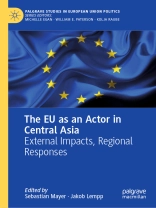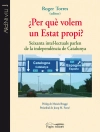This volume explains the behavior of the European Union (EU) towards Central Asia. In so doing, the responses of regional actors which impact the EU’s regional conduct, and the effects of competing external governance providers (particularly Russia and China), are considered. The current literature – often from an interdisciplinary, descriptive area studies angle – reveals some research gaps. Scholars chiefly explore the impacts of the EU on Kazakhstan, Uzbekistan, Kyrgyzstan, Tajikistan, and Turkmenistan, while action of the EU itself with its decision-making, preferences, and underlying drivers, remains underspecified. Focusing more explicitly on the EU, chapters in the book are systematically organized along a set of shared, overarching questions. Ultimately, the authors depict and explain EU action and assess how successful the organization has been in achieving its stated regional objectives in a number of policy fields: Economic Development and Trade; Security; Democratizationand Human Rights; Water; and Education.
Innehållsförteckning
1. Introduction: The European Union and Central Asia.- 2. Key turning points in EU-Central Asia Relations.- Part I. EU External Action and Regional Response.- 3. European Union Action towards Central Asia.- 4. EU Member States and Central Asia.- 5. Negotiating and Implementing the (E)PCAs.- 6. The EU and Central Asia: Mutual Perceptions.- Part II. Action-Response across Issue Areas.- 7. Economic Development and Trade.- 8. Provision of Security.- 9. Democratization and Human Rights.- 10. Environmental Affairs.- 11. Education.- 12. Conclusions.
Om författaren
Sebastian Mayer is DAAD Associate Professor of International Relations at the OSCE Academy and Associate Fellow at the American University of Central Asia in Bishkek, Kyrgyzstan.
Jakob Lempp is Full Professor of Political Science with a focus on International Relations at Rhine-Waal University of Applied Sciences in Kleve, Germany.












